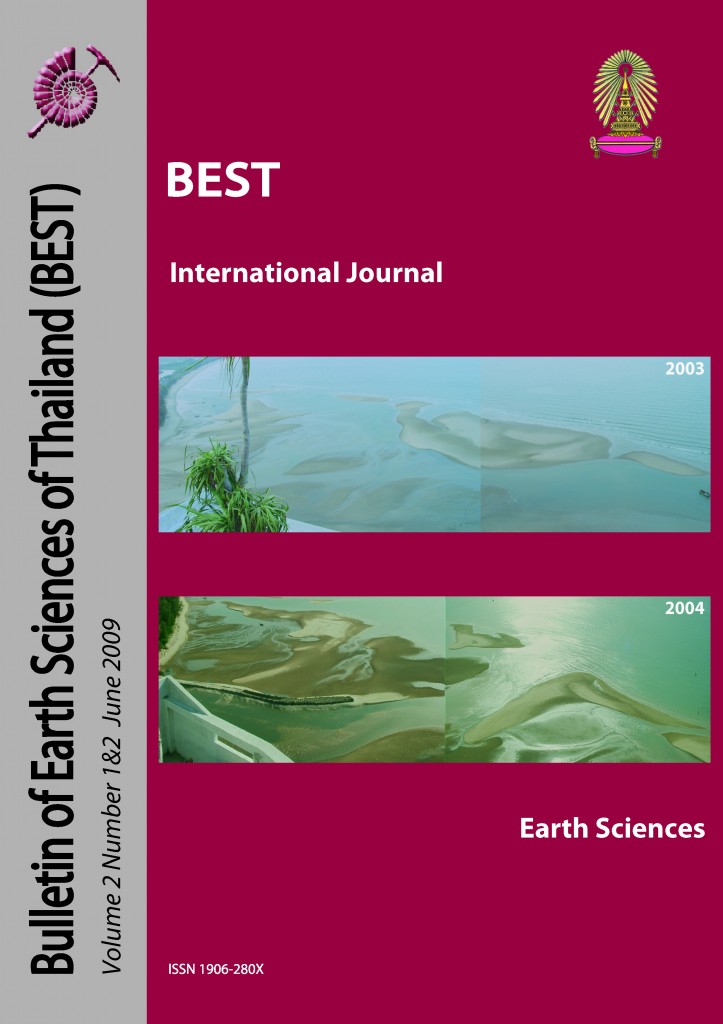ESR-Dating Investigations of Sediments by using Soil along the Southern part of Khong Marui Fault, Phang-Nga Province, Southern Thailand
Main Article Content
Abstract
The Electron Spin Resonance dating (ESR-dating) method has been applied on eight Quaternary samples from Ban Bang Leuk trench, southern Thailand. ESR intensity from E′ defect center (g = 2.001) in extracted quartz molecule to be used for Equivalent dose(ED) by regeneration technique (Takashima and Honda, 1989) which irradiated 20 Gy , 40 Gy ,60 Gy ,90 Gy and 120 Gy. Annual dose (AD) ranges from 4.321 to 7.226 mGy/year. The calculation by ESR method is obtained from ED/AD. The estimated age of lowest and top sediment layer are 5150±410 year and 1575±300 year respectively.
Article Details

This work is licensed under a Creative Commons Attribution-NonCommercial-NoDerivatives 4.0 International License.
Copyright © 2008 Department of Geology, Faculty of Science, Chulalongkorn University. Parts of an article can be photocopied or reproduced without prior written permission from the author(s), but due acknowledgments should be stated or cited accordingly.
References
Lee, H.K. and Yang, J.S., 2006. ESR dating of the Eupchon fault, South Korea, Quaternary Geology, (2 - 1-4), 392-397.
Won-in, K., 2000. Neotectonic evidences along the Three Pagoda fault zone, Chanwat Kanchanaburi, M.Sc. Thesis, Department of Geology, Faculty of Science, Chulalongkorn University.
Yin Gongminga, Lin Min Lu, Yanchuna, Li Jianpinga, and Han Fei (2007). Preliminary ESR dating results on loess samples from the loess–paleosol sequence at Luochuan, Central Loess Plateau, China. Quaternary Geochronology (2), 381–385.


